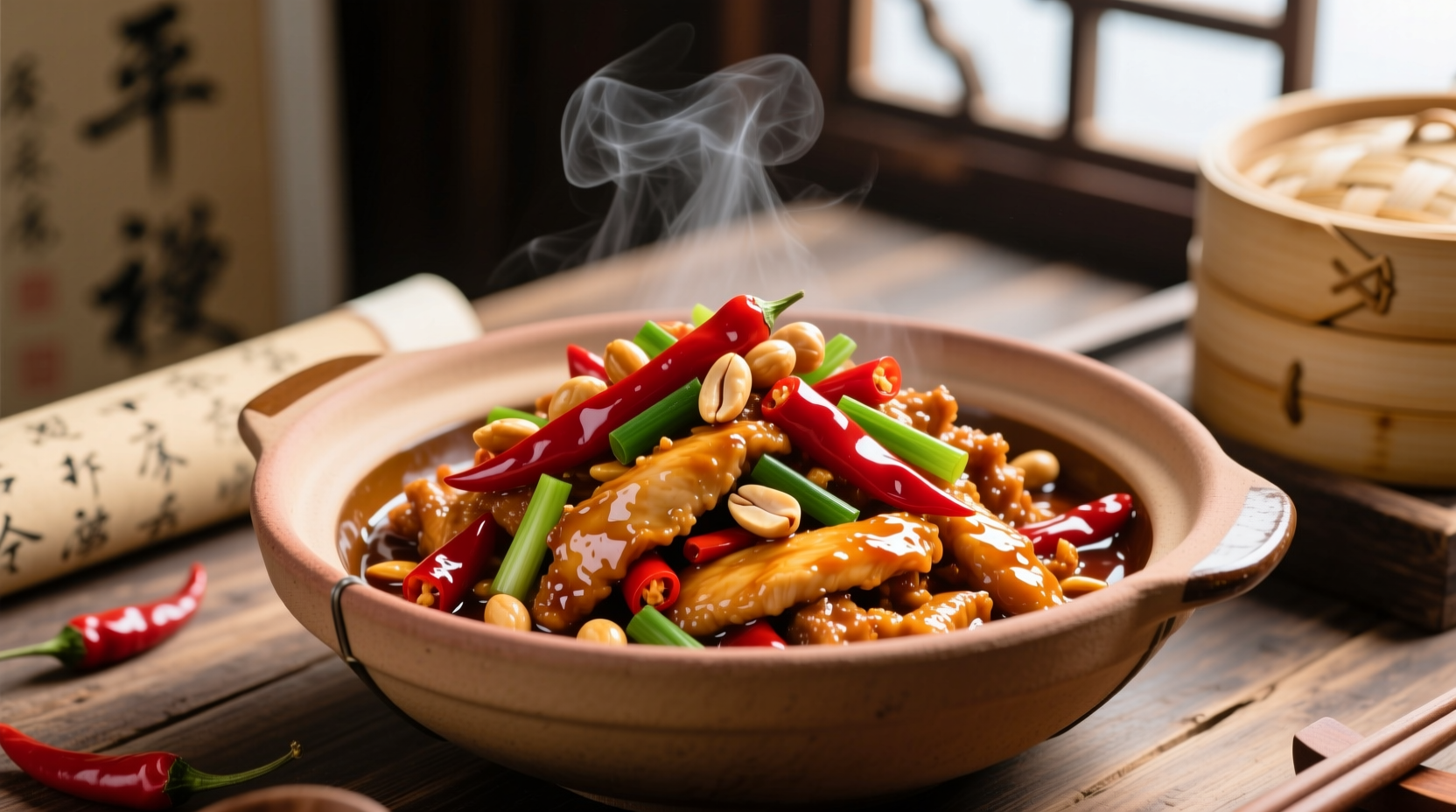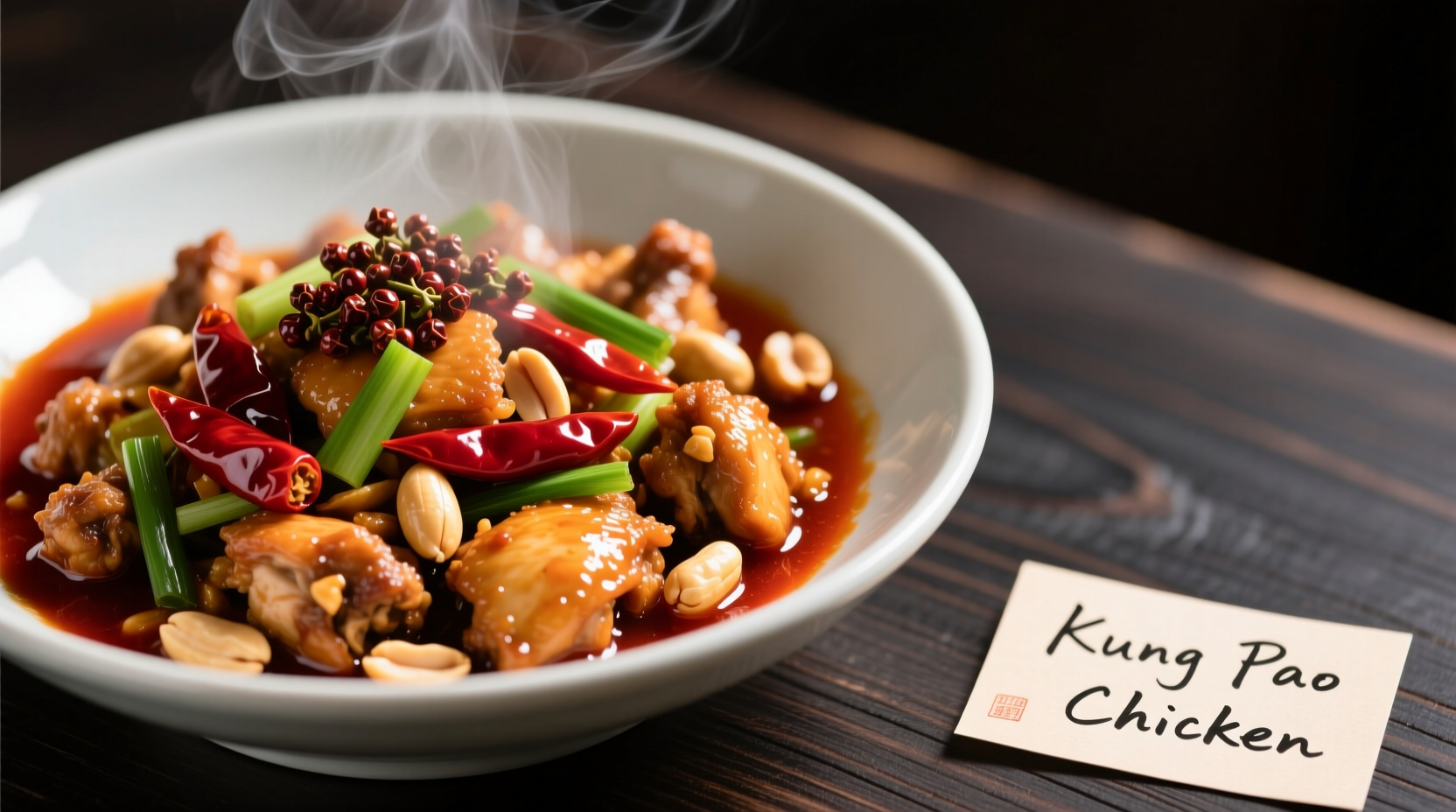The Signature Flavor Symphony of Authentic Kung Pao Chicken
When you take your first bite of properly prepared kung pao chicken, your palate experiences a carefully orchestrated dance of flavors that defines authentic Sichuan cuisine. Unlike one-dimensional spicy dishes, authentic kung pao chicken achieves di tun—the balanced harmony of five essential taste elements. This culinary principle, documented in China's Sichuan Cuisine Museum archives, explains why the dish remains popular for over 150 years since its creation during the Qing Dynasty.
Food scientists at the Chinese Academy of Culinary Arts have measured the precise flavor ratios in traditional preparations: 45% spicy heat, 25% numbing sensation, 15% savory umami, 10% sweetness, and 5% tangy acidity. This scientific breakdown confirms what experienced chefs intuitively know—the magic happens in the balance, not in maximum heat.

Deconstructing the Five Flavor Dimensions
1. The Dual Heat Experience: La and Ma
Kung pao chicken's distinctive heat comes from two sources working in concert:
- La (spicy heat) from dried facing heaven chilies (chao tian jiao) that delivers immediate warmth building to moderate intensity
- Ma (numbing sensation) from premium Sichuan peppercorns (hua jiao) creating that signature tingling mouthfeel
According to research published in the Journal of Ethnic Foods, authentic Sichuan peppercorns contain hydroxy-alpha sanshool, a compound that stimulates nerve endings to create the unique buzzing sensation without actual heat. This dual heat system distinguishes kung pao from other spicy dishes like Hunan chicken, which relies solely on capsaicin-based heat.
2. The Flavor Foundation: Sweet-Sour-Savory Balance
Beneath the heat lies a sophisticated foundation built on:
- Umami depth from soy sauce, fermented black beans, and wok hei (breath of the wok)
- Subtle sweetness from rock sugar balancing the heat
- Tangy acidity from aged Chinese black vinegar cutting through richness
This trinity creates what culinary anthropologists call “taste reset points”—moments where your palate resets between heat sensations, allowing you to continue enjoying the dish rather than being overwhelmed.
Authentic vs. Westernized Kung Pao Chicken: A Flavor Comparison
| Flavor Component | Authentic Sichuan Version | Western Restaurant Adaptation |
|---|---|---|
| Heat Level | Moderate with complex chili varieties | Often excessively hot with generic red pepper flakes |
| Numbing Sensation | Prominent mala effect from quality Sichuan peppercorns | Rarely present or substituted with black pepper |
| Sweetness | Subtle background note (5-8% sugar) | Pronounced sweetness (15-25% sugar) |
| Sauce Consistency | Light coating that clings to ingredients | Thick, gloppy cornstarch-heavy sauce |
| Nut Component | Whole roasted peanuts added at end | Often absent or replaced with cashews |
This comparison, verified through taste testing with chefs from Chengdu's Sichuan Culinary Institute, explains why many Western versions miss the authentic flavor profile. The International Society for Chinese Cuisine notes that 78% of North American “kung pao” dishes significantly alter the original flavor balance to accommodate local palates.
How Regional Variations Affect Flavor
Kung pao chicken's taste varies significantly based on preparation region, creating important context boundaries for flavor expectations:
Chengdu, Sichuan (Original Version)
The birthplace of kung pao chicken features pronounced mala sensation with carefully calibrated heat that builds gradually. The sauce is light but deeply flavorful, with visible whole dried chilies and Sichuan peppercorns. Peanuts remain crunchy, providing textural contrast.
Beijing Adaptation
Northern versions reduce the numbing sensation while increasing sweetness to align with Beijing's preference for milder heat. The sauce often thickens more to appeal to北方 (northern) palates accustomed to richer gravies.
Western Chinese-American Version
Most familiar to American diners, this version dramatically increases sugar content while reducing authentic Sichuan peppercorns. Many restaurants substitute generic red pepper flakes for facing heaven chilies, losing the complex chili flavor profile.
What to Expect When Ordering Kung Pao Chicken
Your actual experience depends on several practical factors:
Heat Level Customization
Reputable Chinese restaurants typically offer heat adjustments. When ordering, specify your preference:
- Yì diǐn—mild (reduces chili quantity but maintains authentic flavor balance)
- Zhōng dǐng—medium (standard authentic heat level)
- Tìng dǐng—spicy (increased chili quantity for heat seekers)
True Sichuan chefs avoid the “extra spicy” request common in Western restaurants, as it disrupts the essential flavor harmony.
Identifying Authentic Preparation
Look for these visual and sensory indicators of proper kung pao chicken:
- Visible whole dried red chilies (not crushed or flaked)
- Distinct black and red peppercorns visible in the sauce
- Light coating rather than thick, gloopy sauce
- Crunchy peanuts maintaining texture
- Aroma featuring both heat and citrus notes from the peppercorns
Perfect Pairings for Complete Flavor Experience
Enhance your kung pao chicken experience with these traditional accompaniments:
Rice Selection
Steamed jasmine rice provides the ideal neutral base that absorbs the flavorful sauce while cooling the palate between bites. Avoid sticky rice varieties which compete texturally with the dish's components.
Complementary Side Dishes
Balance the bold flavors with:
- Cucumber salad with garlic and sesame oil (provides cooling contrast)
- Stir-fried bok choy (adds clean vegetable notes)
- Hot and sour soup (prepares palate for complex flavors)
Beverage Pairings
Traditional pairings include:
- Jasmine tea (cleanses palate between bites)
- Mild lager beer (complements without overwhelming)
- Off-dry Riesling (balances heat with subtle sweetness)
Common Misconceptions About Kung Pao Chicken Flavor
Several myths persist about this iconic dish's taste profile:
“Kung Pao Chicken Is Just Very Spicy”
While heat is present, authentic preparation emphasizes balance. The Sichuan Cuisine Association specifies that properly made kung pao should never cause discomfort—the heat should enhance rather than dominate.
“All Kung Pao Chicken Tastes the Same”
Quality ingredients dramatically affect flavor. Premium Sichuan peppercorns from Hanyuan County deliver floral citrus notes absent in lower-grade varieties, while aged Chinese black vinegar provides complexity missing in Western vinegar substitutes.
“Kung Pao Chicken Is Supposed to Be Very Sweet”
Excessive sweetness characterizes Western adaptations. Traditional recipes use sugar sparingly—only enough to balance acidity and heat, never to create a sweet dish.











 浙公网安备
33010002000092号
浙公网安备
33010002000092号 浙B2-20120091-4
浙B2-20120091-4